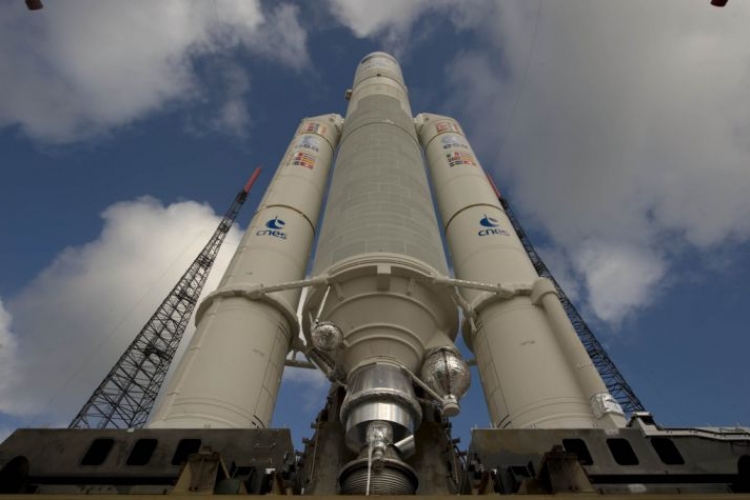GSAT-11
IN NEWS
A team of top officials and engineers of the Indian Space Research Organisation (ISRO), now stationed in the Guiana Space Centre, South America, is going over the last steps before it sees off the heaviest Indian communication satellite, GSAT-11, to its space orbit.
GSAT-11 is part of ISRO’s new family of high-throughput communication satellite (HTS) fleet that will drive the country's Internet broadband from space to untouched areas; the broadband domain is now ruled by underground fibre and covers partial and convenient locations.
GSAT-11 will play a vital role in providing broadband services across the country. It will also provide a platform to demonstrate new generation applications.
Its co-passenger is South Korea’s GEO-KOMPSAT-2A, a meteorology satellite.

GSAT-11
GSAT-11 is an advanced communication satellite with multi spot beam coverage over the Indian mainland and nearby Islands to bring huge advantage to the user community, compared with the existing INSAT/GSAT satellite systems. The Lithium Ion batteries and the power distribution systems on board the GSAT-19 have also been developed indigenously. With this new system architecture and the cutting-edge technology elements proposed to be employed for realization, GSAT-11 will generate a capacity of more than 12 Gbps for users from a single platform. GSAT-11’s multiple spot beam coverage — 32 in Ku band and eight in Ka bands — will deliver an improved service of 16 gbps over the Indian region and nearby islands.
GSAT-19 will be launched by GSLVMk III, Isro's next-generation launch vehicle boosted by an indigenous cryogenic engine that is capable of carrying a four-tonne satellite to the geosynchronous transfer orbit. These satellites will use multiple spot beams that will increase internet speed and connectivity. These multiple spot beams will cover the entire country.
SIGNIFICANCE OF GSAT-11
- Equivalent of 150 transponders, GSAT-11 can revolutionize telecommunication and broadcasting protocols in the country.
- GSAT-11 can transmit data at a speed of 10 Gigabytes per second to the entire nation. Further, it will eliminate the usage of cables and wires to transmit data, and both Internet and TV can be powered by this huge 4 tonne satellite.
- Additionally, it can be also used to power smart cities which are being planned in India.The satellites will provide the infrastructure necessary for the smart cities projects cropping up across the nation. At the same time, the satellites will also revolutionise the TV and entertainment industries.
- The ideaof this launch of satellite is to increase the number of transponders available for communications, and reduce the dependence of the country on wired communications.
- This will also be the backbone of pan-India digital or easy Internet-based programmes and services — such as Digital India, BharathNet for rural e-governance, and commercial and public sector VSAT Net service providers.
- Television services will be delivered through the internet, and users can even browse the internet through their televisions. The satellite will transmit the data to Wi-Fi towers placed in the locality, and from there relayed to homes through dongles connected to the television sets.
- The GSAT-19 will place India in the league of countries with high-throughput communications satellites, which have revolutionised connectivity in developed economies.
- Services related to banking, healthcare, governance, and entertainment will be available reliably in remote areas because of the GSAT-19.
- Apart from the Ku and Ka band transponders on board, there is an instrument to measure the affect that space weather and high energy particles have on communications systems.
Already up in space are two HTSs — GSAT-29 (November 14) and GSAT-19 (June 2017) — while one more is due to join them in the near future. They are all to provide high-speed Internet data services at the rate of 100 Gbps (Gigabits per second) to Indian users.
India is on track to have 730 million internet users by the year 2020. Although telecom service providers are bringing internet service to an increasing number of people, India continues to stay behind in the regional and global rankings for internet performance. Apart from humans, connected cars, smart cities and the Internet of Things will all require more or less constant connectivity. The three satellites by ISRO are a way for India to meet this surge in demand.


 IAS -2025 Prelims Combined Mains Batch - III Starts - 14-04-2024
IAS -2025 Prelims Combined Mains Batch - III Starts - 14-04-2024